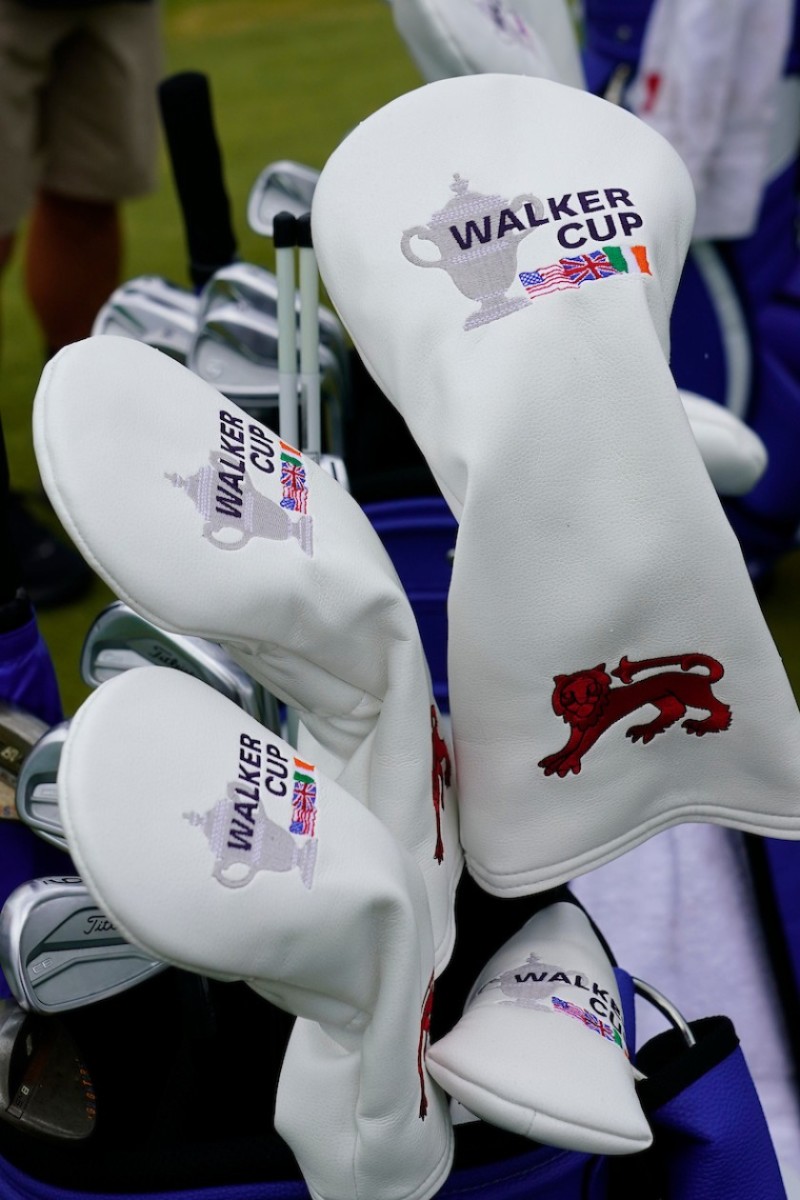Walker Cup offers peek at golf's next generation

JUNO BEACH, Fla. – At the mention of the Walker Cup, many sports followers and more than a few golf fans might respond with a quizzical look.
With a clue to the format – a two-day match between the top male amateurs from the U.S. against their counterparts from Great Britain and Ireland – the inevitable response often would be something along the lines of, You mean, like the Ryder Cup?
Yes, but …
In many ways, a comparison with the Ryder Cup doesn’t do the Walker Cup justice. The amateur event is five years older than its professional cousin, dating to 1922 at National Golf Links of America on Long Island. The 48th Walker Cup will be played this weekend at Seminole Golf Club in Juno Beach, Fla., with matches starting Saturday.
Unlike later this year at Whistling Straits, when the U.S. and Europe will meet for the right to hold the Ryder Cup for two years, with 40,000-plus spectators and corporate chalets dotting the Wisconsin property, the Walker Cup will be a comparatively tame affair. Because of the COVID-19 pandemic, spectators will be limited. Even without a pandemic, fans at a Walker Cup typically would not number more than 2,000 or so each day.
However, with no gallery ropes to impede the access to the event, Walker Cup fans will enjoy a true close-up of golf’s future.
I covered my first Walker Cup in 1997 at Quaker Ridge in Scarsdale, N.Y. Despite a blowout 18-6 victory for the Americans, the purity of the golf, national pride and foundation of friendships made a lasting impression.
Nearly a quarter century later, I find it refreshing that there were so many future PGA Tour winners in those matches. Among them, GB&I’s Justin Rose, whom I would cover a year later when, having just turned 18, he nearly won the British Open at Royal Birkdale. Also, American Jason Gore, whose Pepperdine team won the NCAAs, which I covered in a cold suburb of Chicago, earlier that year.
So much promise was on both sides that week.
I haven’t missed a Walker Cup since 1997 and enjoy meeting many of the future professional stars in their last amateur hurrah.
My introduction to Rory McIlroy came at the 2007 Walker Cup at Royal County Down in his native Northern Ireland. Unlike Tiger Woods, whose buildup as an amateur a decade earlier had been extraordinary, McIlroy came to the Walker Cup with a far more subdued reputation.
At age 18, McIlroy was short, thin and topped with a mop of dark curly hair, but he was the darling of local fans as he narrowly missed leading his team to victory against a heavily favored American side.
Looking back on those matches, the GB&I team was composed of relative nobodies, with the exception of McIlroy and England’s Danny Willett, a future Masters champion. The U.S. team was stacked. It was the first time I got to see Rickie Fowler, Billy Horschel, Dustin Johnson, Jamie Lovemark and Webb Simpson. Colt Knost, the reigning champion of the U.S. Amateur and U.S. Amateur Public Links, also was on the team. I spent a lot a time with Knost when he won the U.S. Amateur at The Olympic Club a month earlier.

So, four future major champions – McIlroy, Willett, Johnson and Simpson – who would go on to amass eight of golf’s biggest prizes among them played in that Walker Cup.
Many times, the U.S. team enters as favorites and, just as with so many Ryder Cups, leaves with its tail between its legs. The Americans have won two consecutive matches and lead the overall series, 37-9-1, but since absorbing that 12-point drubbing in 1997, GB&I has won five of the past 11.
One such GB&I stunner came in 2001 at Ocean Forest Golf Club in Georgia.
It wasn’t as if the U.S. team was stocked with stars, though it did have Lucas Glover, Bryce Molder, Jeff Quinney and D.J. Trahan. For fans of amateur golf 20 years ago, that was pretty good group.
But GB&I had two stars in the making: 23-year-old Luke Donald, who was well known in the states after his college career at Northwestern, and 22-year-old Graeme McDowell, who was not as widely known but played a gritty game.
The Americans struggled to get their bearings and, after they lost the Sunday singles, 6½-1½, the 15-9 drubbing would be known as one of the most lopsided GB&I victories on U.S. soil.
It also has been the last time that the Americans have lost at home.
Among the many Walker Cup players whom I have seen during my 12 editions of the biennial series: Patrick Cantlay, Paul Casey, Cameron Champ, Bryson DeChambeau, Harris English, Matt Every, Matthew Fitzpatrick, Tommy Fleetwood, Bill Haas, Brian Harman, Russell Henley, J.B. Holmes, Max Homa, Anthony Kim, Matt Kuchar, Tom Lewis, Maverick McNealy, Robert MacIntyre, Ryan Moore, Collin Morikawa, Richie Ramsay, Patrick Rodgers, Scottie Scheffler, Jordan Spieth, Andy Sullivan, Justin Thomas and Will Zalatoris .
This weekend, I will be at Seminole covering some of the best amateur golfers from both sides of the Atlantic. Though the PGA Tour’s Wells Fargo Championship will be televised, perhaps with first-round leader Phil Mickelson making a charge on the weekend, I will be certain of this fact: The Walker Cup not only will be entertaining, but the future of the professional game will be on display for two days, with 10 young men on either side as nervous as they’ve ever been on a golf course.
Sign up to receive the Morning Read newsletter, along with Where To Golf Next and The Equipment Insider.
